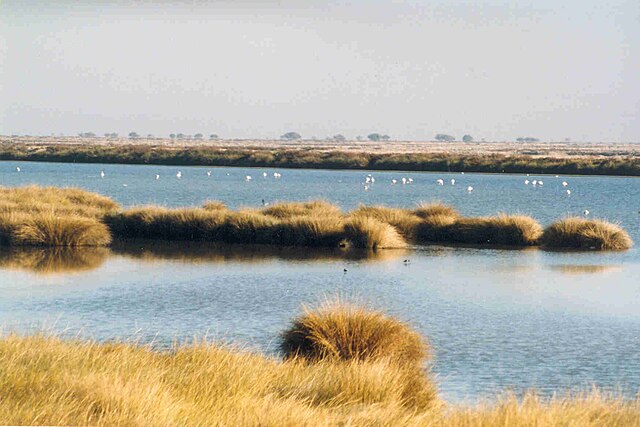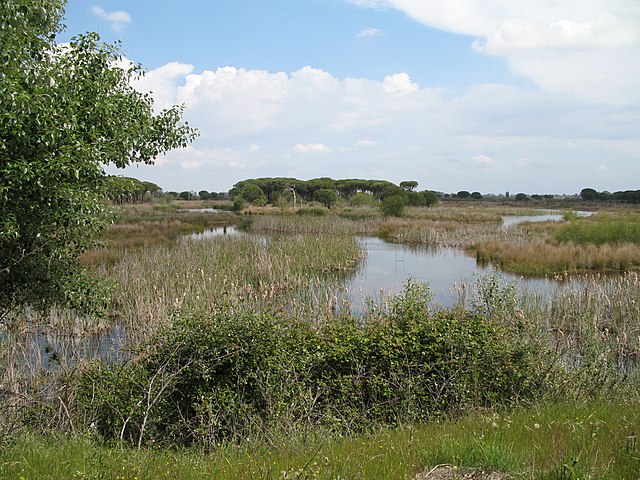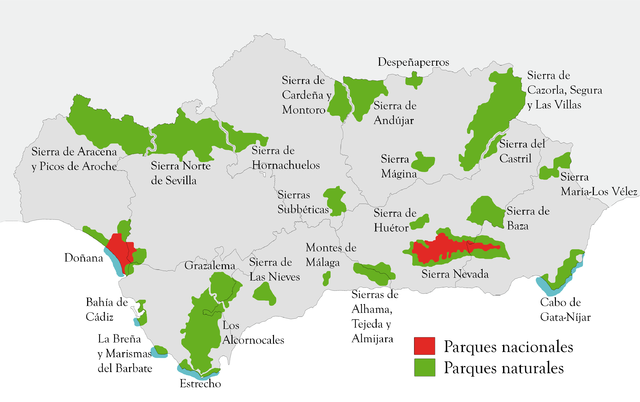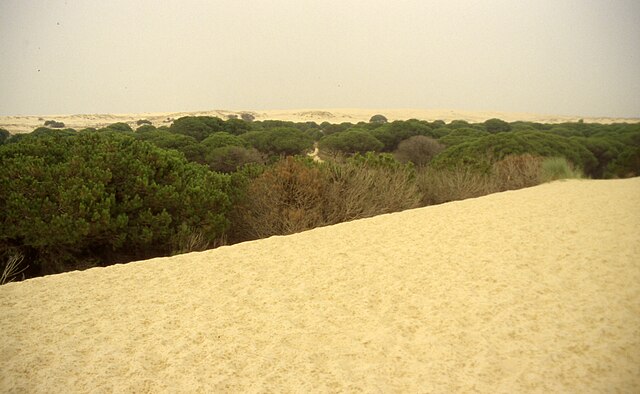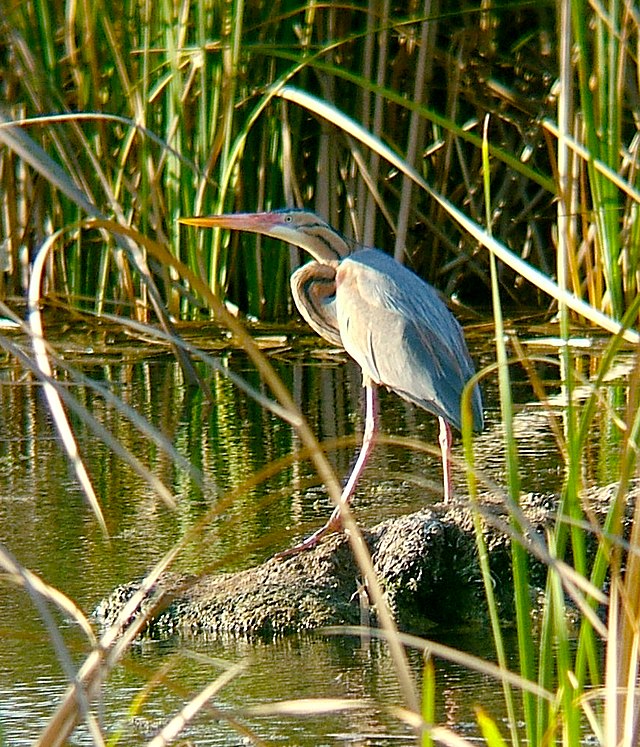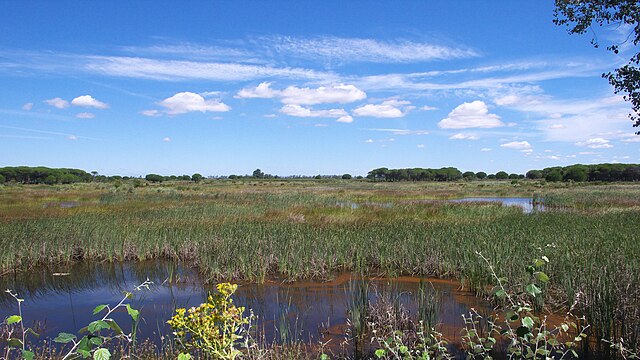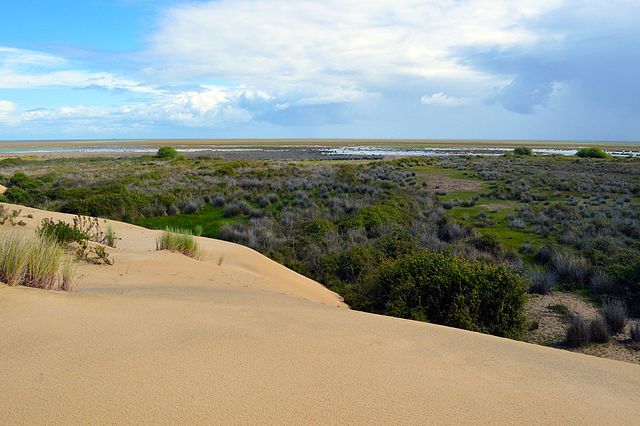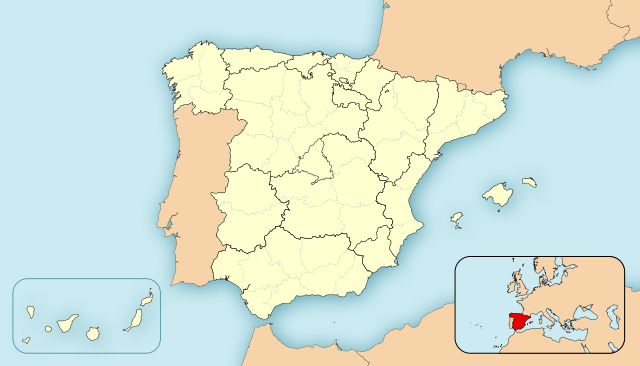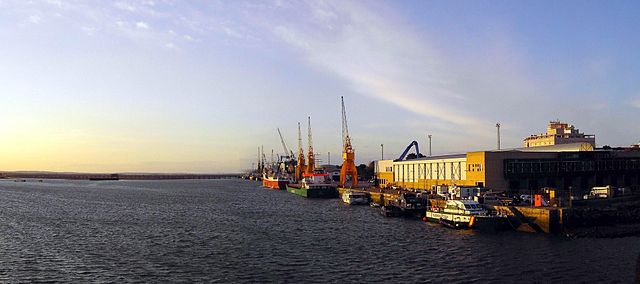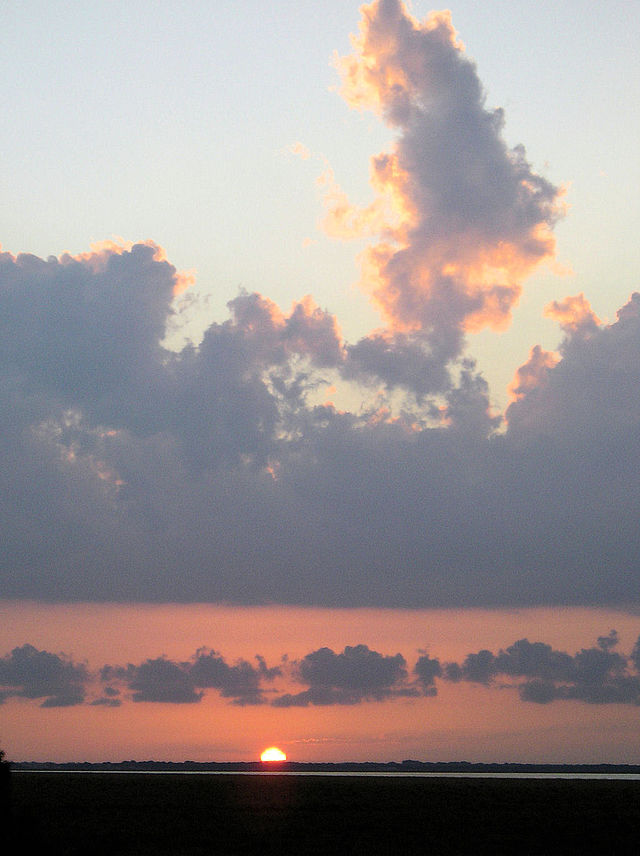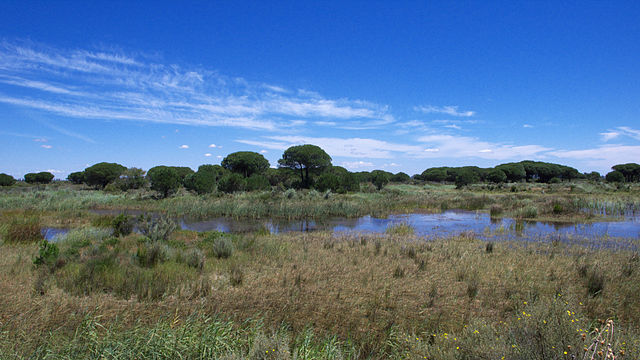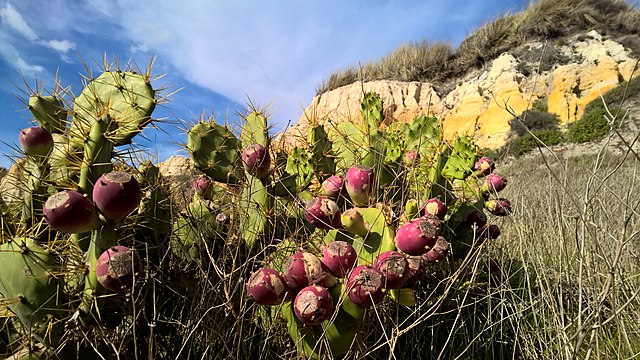Doñana (Parque nacional y natural de Doñana)
Doñana é un espazo natural protexido español situado en Andalucía, entre as provincias de Cádiz, Huelva e Sevilla, que conta con 108.086 ha (54.251 ha no Parque Nacional, e 53.835 ten no Parque Natural). Comprende tanto o Parque Nacional de Doñana (creado en 1969) como o Parque Natural de Doñana (creado en 1989 e ampliado en 1997), e a súa grande extensión de marismas acolle durante o inverno a numerosas especies de aves acuáticas, que adoitan alcanzar cada ano os 200.000 individuos.
Debido á súa privilexiada situación xeográfica entre dous continentes e a súa proximidade ao lugar de encontro do Atlántico e do Mediterráneo, o Estreito de Xibraltar, en Doñana pódense observar máis de 300 especies diferentes de aves ao ano, ao ser lugar de paso, cría e invernada para miles delas (acuáticas e terrestres) europeas e africanas. Aquí repousan aves acuáticas de toda Europa Occidental, localizándose infinidade de especies nas marismas e arredores procedentes de África e Europa.
Con diferentes institucións científicas no seu interior que velan por un desenvolvemento axeitado das bisbarras limítrofes e a conservación dalgunhas especies moi delicadas que habitan nel, considérase a maior reserva ecolóxica de Europa. Foi declarado Patrimonio da Humanidade pola UNESCO en 1994. No ano 2006 o parque recibiu 376.287 visitas.
O seu nome provén segundo algúns do de Dona Ana de Silva e Mendoza, esposa do VII Duque de Medina-Sidonia. Segundo outros de Ana Mallarte, casada con Sancho de Herrera, arrendatario dos pastos da parte de El Palacio en 1545.
Links
Images Gallery
Comments
-
Doñana National Park in Andalusia occupies the right bank of the Guadalquivir river at its estuary on the Atlantic Ocean. It is notable for the great diversity of its biotopes, especially lagoons, marshlands, fixed and mobile dunes, scrub woodland and maquis. It is home to five threatened bird species. It is one of the largest heronries in the Mediterranean region and is the wintering site for more than 500,000 water fowl each year.
2 months ago -
Marvelous area, paradise for bird watcher and not only! Many type of landscape as sand dune, marshes, woods and little villages. A splendid occasion to live in perfect harmony with Nature.
3 years ago -
Fantastic place to visit. You need to get an official tour with the guide, but it is worth it. You can see a lot of different animals in a wildlife. We saw a lot of deers, wild boar, wild horses, many different kind of birds. Unfortunately we didn't see the lynx.
2 years ago -
Lovely sands that stretch for miles. Peaceful unspoilt area. Crossed by ferry from Sanlucar €8 return
2 years ago -
We visited for 2 nights 3 days staying at the Parador at Mazagon. We love nature so this was an ideal location for us. We spent most of our free time visiting the various information centres in the area and enjoying the walks that we could do and the numerous visual displays set up in these centres. For obvious reasons, in order to visit the inner parkland area it is necessary to book ahead and go on an escorted keep ride which lasted 4 hrs. They do it twice daily early morning and late evening avoiding the heat of mid-day.
3 years ago -
Probably the best time to visit is in April May especially if green is your favourite colours as it is mine. The nature, pine trees forests, mixed with eucalyptus and all sort of bushes looks heavenly and the variety of birds and tones on chirps just adds up to this feeric scenary. If you like nature and tracking, here are quite a few extraordinary routes starting with Rociana and El Albaron as well as strolling around the marsh edging El Rocio village, very authentic, pretty eqvestric sceneary, no pavements at all, but definitely fascinating. My son had a ride on a poney, we've been able to watch the flamingos, what more can you wish for ?
2 years ago -
I went on the morning tour to avoid the afternoon heat. The tour guide, Pili, was great explaining interesting things about the park and its flora and fauna. There was a small cold water for each one of us on the bus.
4 years ago -
